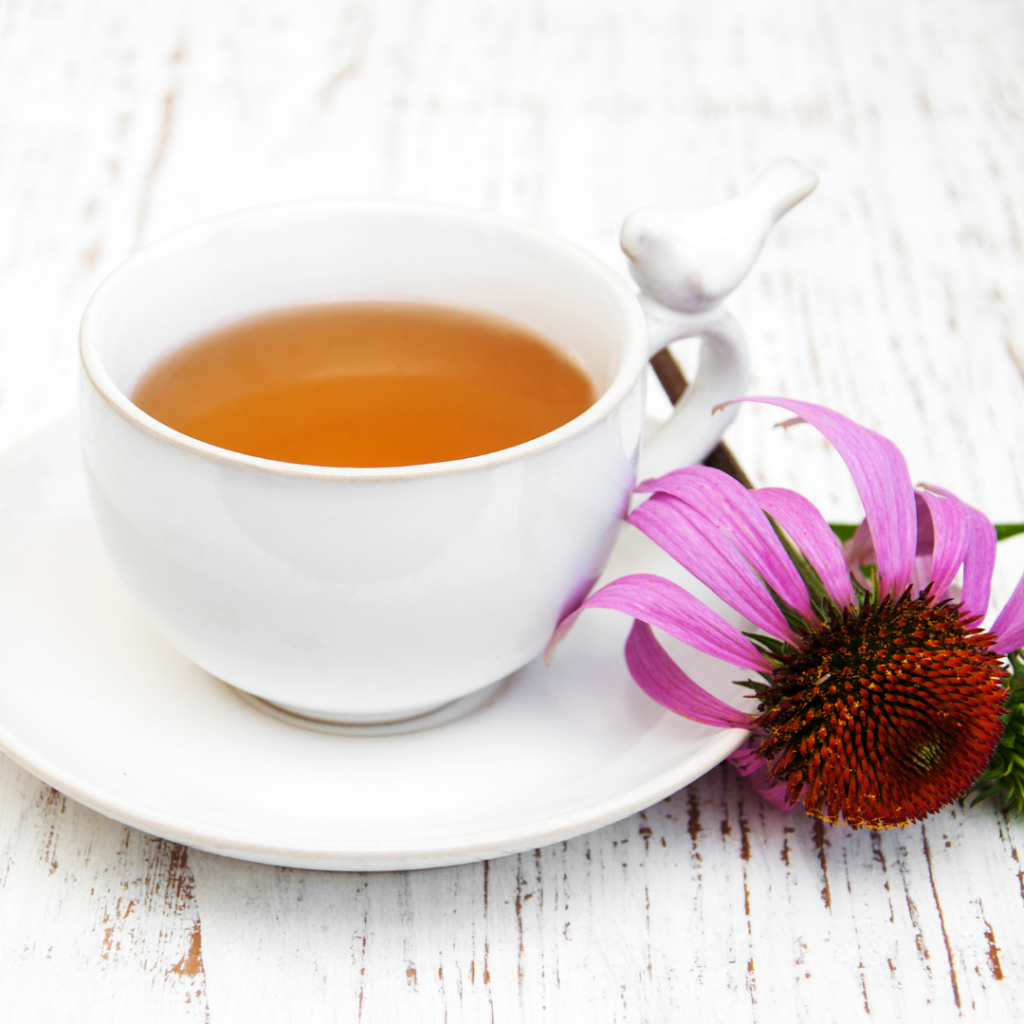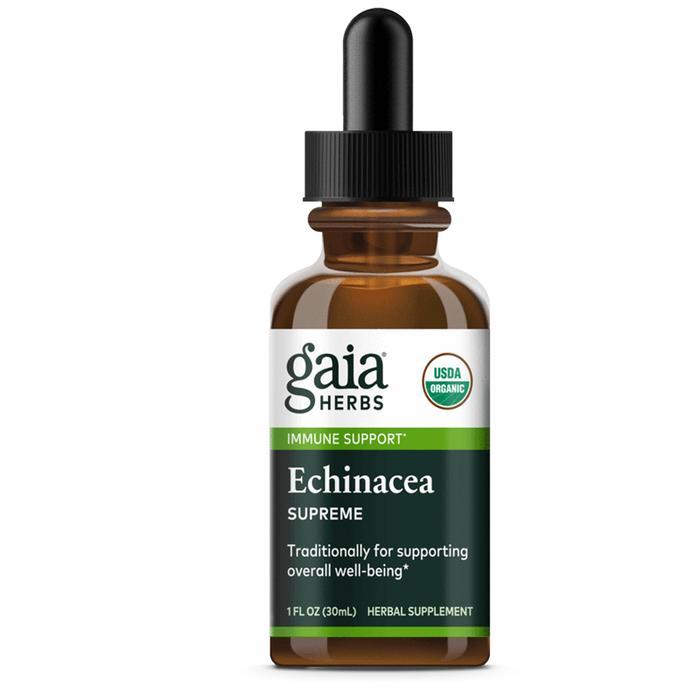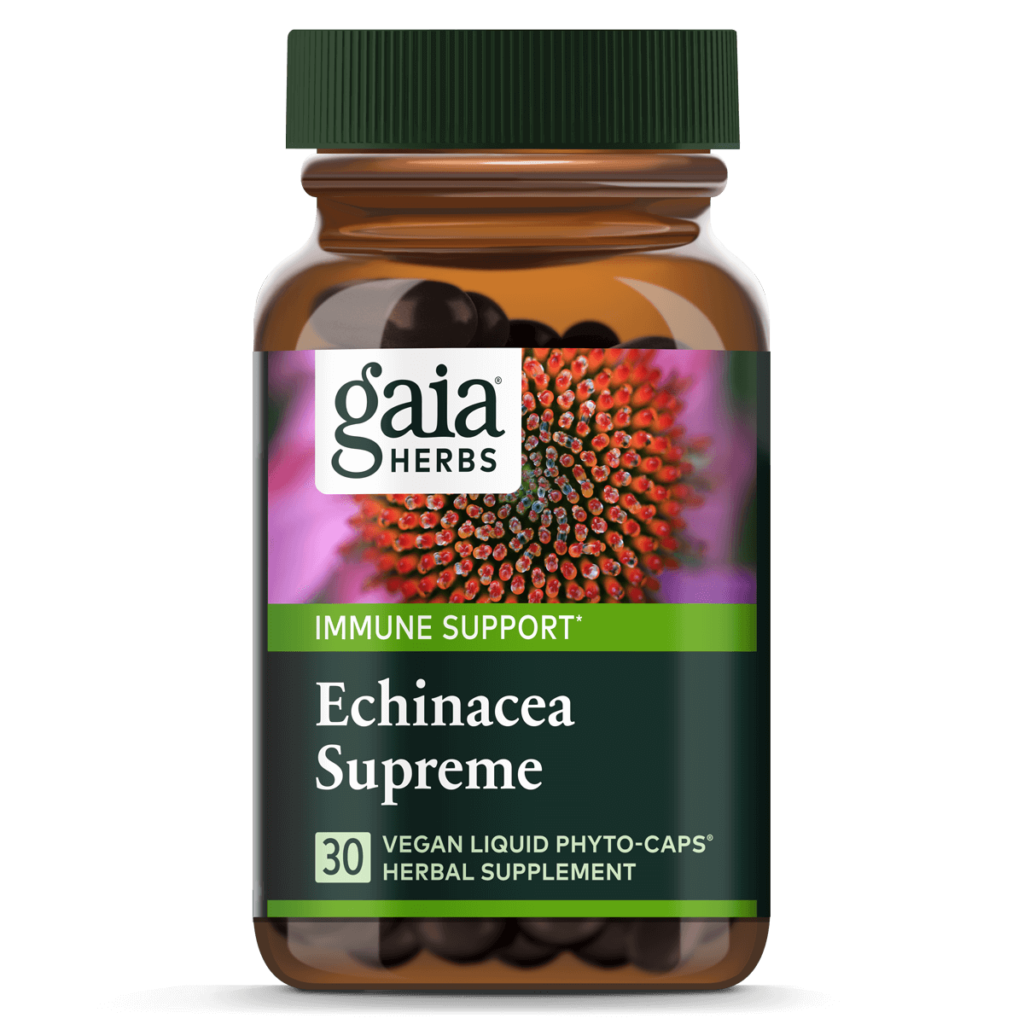
We love it for..
Immune Boost, Colds, Flu, Fatigue
Echinacea is particularly beneficial in helping the body heal quickly from colds, flu, sore throat, sinus infections, sinusitis, hay fever, bronchitis, canker sores, enlarged lymph glands, ear infections, gingivitis, enlarged prostate, urinary tract infections, and yeast infections.*
Why We Love It
■ Echinacea, also known as coneflower, is a medicinal plant that has been used for centuries to help keep the immune system active and healthy. Echinacea contains a compound known as echinacein which protects healthy cells from viruses and bacteria that are trying to invade them.*
■ A key medicinal herb, echinacea has a tonic action on the body’s immune system. Known by 19th-century Americans as Indian Snakeroot (due to its ability to treat snake bites), the herb has a potent ability to counter infection, especially viral and bacterial, and to aid the clearance of toxins from the body. It is commonly taken as a preventative and treatment for upper respiratory infections such as colds, flu, and coughs.
■ Due to its powerful immune boosting abilities, its best to only take echinacea for a short period of time, usually from a few days to a few weeks, depending on your illness. This short duration will activate your immune system, but also protect it from becoming over-stimulated.*
How We Use It



Our Favorite Brands
Where to Buy in the Philippines
Healing Recipe

Echinacea Immunity Boost Water
Ingredients: Echinacea tincture preferably use alcohol-free.
Directions: Prepare a warm half-cup of water. Put 28 drops of tincture. Drink three times a day. Maximum intake can be only up to two days.
Research Resources
| Scientific Name | Echinacea spp. (Asteraceae) |
| Description | A perennial growing to 4 ft (1.2 m) with upright stems and pink to purple daisy-like flowers. |
| Constituents | Alkylamides (mostly isobutylamides), Caffeic acid esters (mainly echinacoside and cynarin), polysaccharides |
| Key Actions | Immune modulator, Antimicrobial, Anti-inflammatory, Detoxifying, Heals wounds, Stimulates saliva |
| Habitat & Cultivation | Native to central parts of the U.S., three species of echinacea are used medicinally: E. angustifolia, E. purpurea, and E. pallida. All are threatened in the wild and only commercially grown plants should be used. E. purpurea is cultivated widely in the U.S. and Europe. Grown from seed in spring or by root division in winter, it thrives in rich, sandy soil. The leaves and flowers are gathered during flowering; the roots of 4-year-old plants are lifted in autumn. |
| Parts Used | Flower, Roots |
| Cautions | Can cause allergic reactions in rare cases. |
Clinical Studies
■ Immune system Clinical research into echinacea has confirmed that it increases the number of white blood cells and their strength of action, although its precise mode of action on immune function is not well understood. The polysaccharides inhibit the ability of viruses to take over cells, while the alkylamides are antibacterial and antifungal. Research supports the use of echinacea to prevent colds and respiratory infections resulting from air travel. Not all clinical trials have found positive effects, possibly because in some cases too low a dose of echinacea was used.
Source: Encyclopedia of Herbal Medicine


